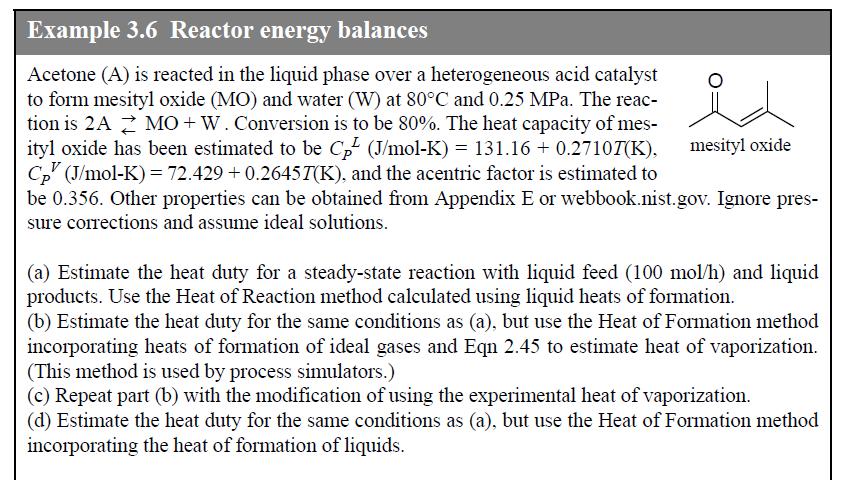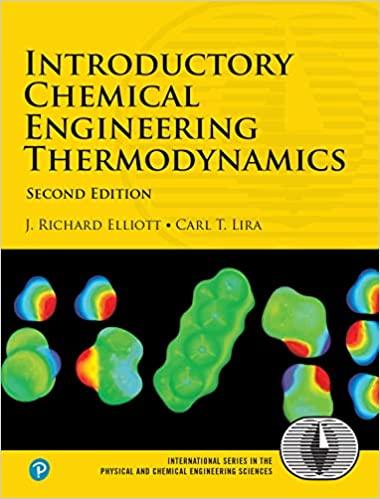Dimethyl ether (DME) synthesis provides a simple prototype of many petrochemical processes. Ten tonnes (10,000 kg) per
Question:
Dimethyl ether (DME) synthesis provides a simple prototype of many petrochemical processes. Ten tonnes (10,000 kg) per hour of methanol are fed at 25°C. The entire process operates at roughly 10 bar. It is 50% converted to DME and water at 250°C. The reactor effluent is cooled to 75°C and sent to a distillation column where 99% of the entering DME exits the top with 1% of the entering methanol and no water. This DME product stream is cooled to 45°C. The bottoms of the first column are sent to a second column where 99% of the entering methanol exits the top at 136°C, along with all the DME and 1% of the entering water, and is recycled. The bottoms of the second column exit at 179°C and are sent for wastewater treatment. Use the method of Example 3.6(b) to complete the following:
(a) Calculate the enthalpy in GJ/h of the feed stream of methanol.
(b) Calculate the enthalpy in GJ/h of the stream entering the first distillation column.
(c) Calculate the enthalpy in GJ/h of the DME product stream.
(d) Calculate the enthalpy in GJ/h of the methanol recycle stream.
(e) Calculate the enthalpy in GJ/h of the aqueous product stream.
(f) Calculate the energy balance in GJ/h of the entire process. Does the process involve a net energy need or surplus?
Data from Example 3.6(b)

Step by Step Answer:

Introductory Chemical Engineering Thermodynamics
ISBN: 9780136068549
2nd Edition
Authors: J. Elliott, Carl Lira





